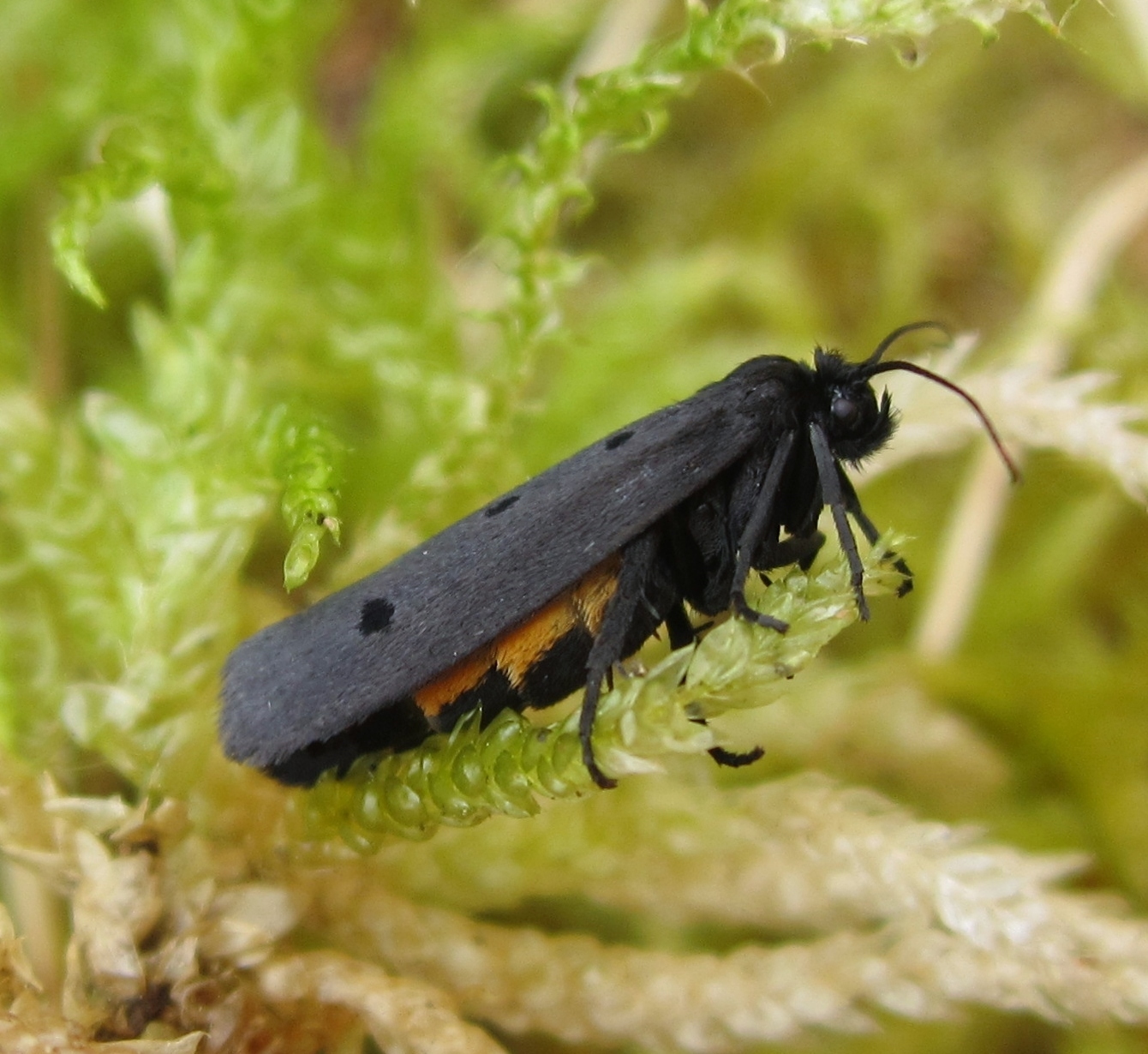One of the UK’s rarest moths appears to be a regular visitor to the Highlands.
The micro moth ethmia pyrausta has been seen in on the Ross-Sutherland border 15 times in five weeks.
The moth has only been spotted a handful of times since its discovery in the 19th century.
It was first seen in Northern Scotland in 1853 and wasn’t seen again for around 150 years. Yet in recent weeks an impressive number of sightings have been recorded.
Nigel Richards from Butterfly Conservation Highlands and Islands branch was out looking for emperor moths when he made the initial discovery on Croick Estate on April 24. He spotted two adults, both with the typical hairy, yellow underbelly and dark grey, sooty-coloured forewings decorated with black spots.
Since then he has recorded another 13 adults, including two found on May 31 during a search for the moth’s caterpillars – which have never before been seen in the UK.
Despite the sighting of the two adults, no caterpillars were found, but another search is planned next month.
Mr Richards said: “This is only the sixth British record of this moth. It was first discovered in 1853 on the banks of the River Shin and then rediscovered in 1996 in the Cairngorms. Single specimens were also found at Loch Vrotachan in Aberdeenshire in 2001, near Loch Morie in 2008 and on the slopes of Ben Griam Mor in 2012.
“Before now there has never been any evidence that ethmia pyrausta has been breeding in the UK, but the discovery of so many adult moths in one location is highly significant. I haven’t given up on looking for the caterpillars, which may well be feeding on Alpine meadow-rue, a plant found in the higher parts of the estate and one it’s known to feed on at confirmed breeding sites in Europe.”
Croick Estate where the moth was found is 75 miles north of Inverness. During the last 20 years land management has focussed on benefiting the local wildlife and includes the planting of new trees and a reduction in grazing.
James Hall, whose family own the estate, said: “We’re absolutely delighted at this new discovery, which after everyone’s hard work to manage the land and improve its biodiversity feels like a huge reward.
“We will continue to work with Butterfly Conservation to understand more about this rare moth, its population size and why it’s prospering in this particular location and will do whatever we can to support Mr Richards and encourage it to do well here.”
The wildlife charity’s head of conservation, Mark Parsons, said: “This is an unexpected but very exciting find. Hopefully this will lead to a better understanding of this moth’s habitat requirements and perhaps the discovery of further colonies in the future.”
